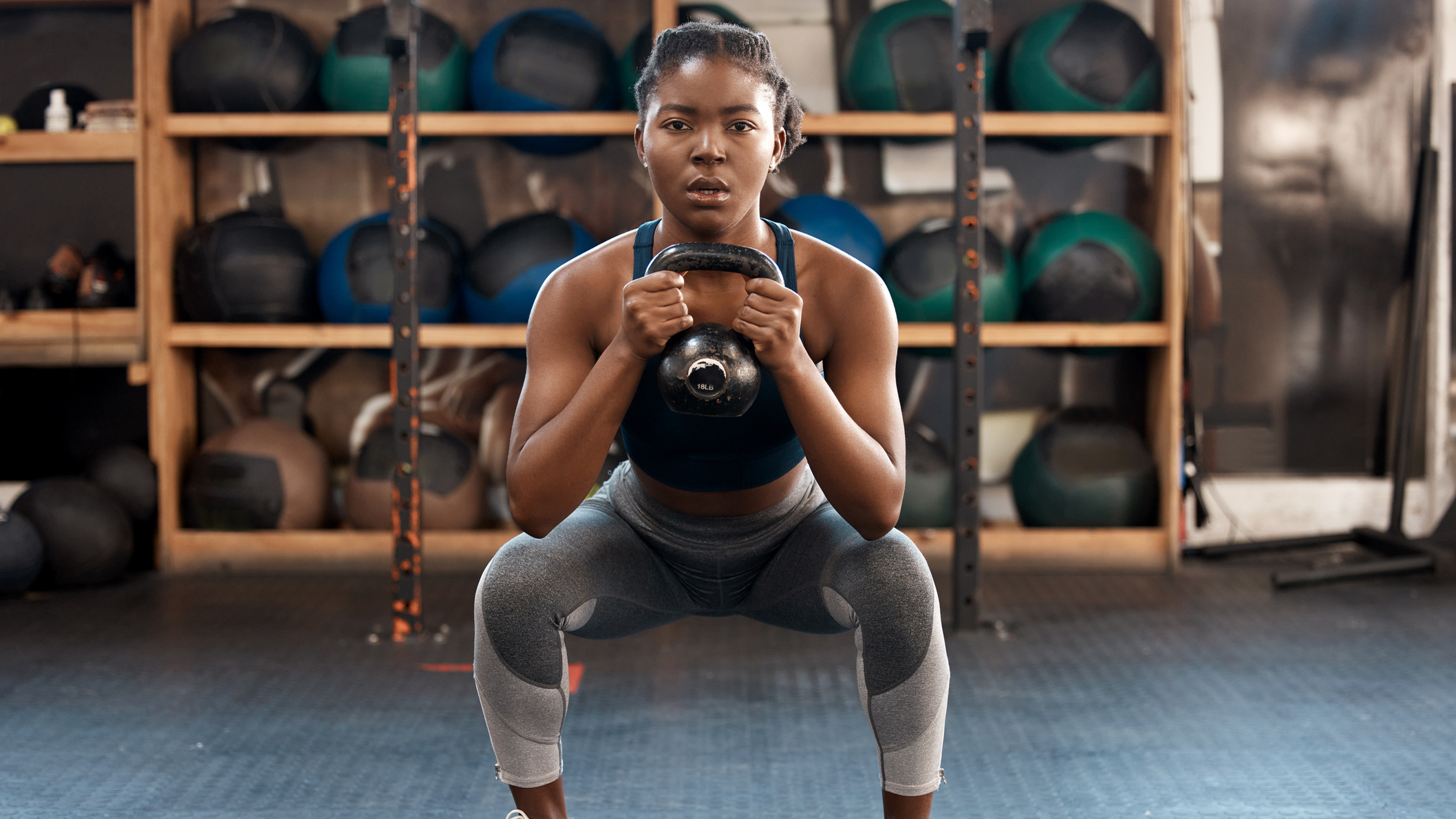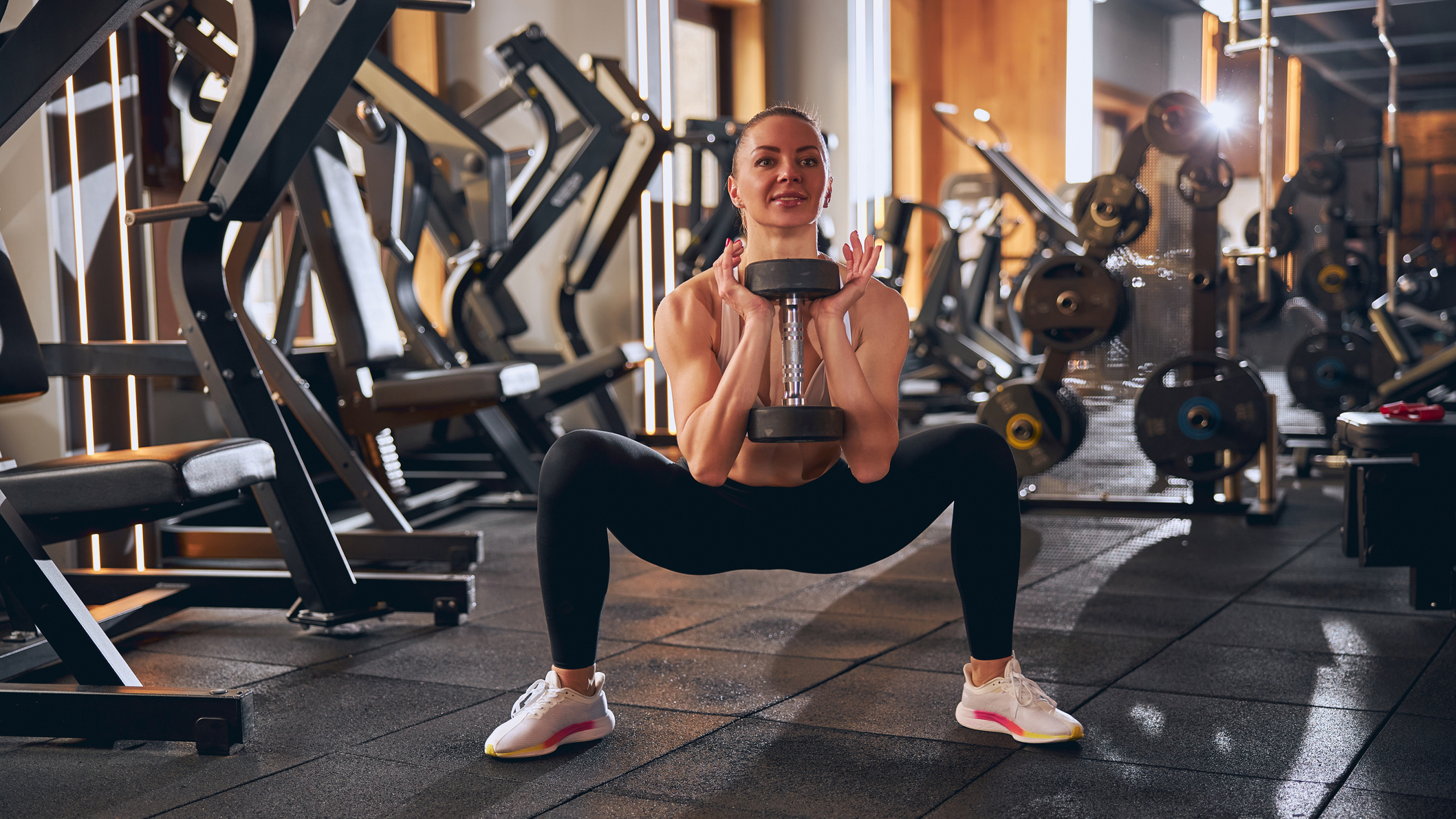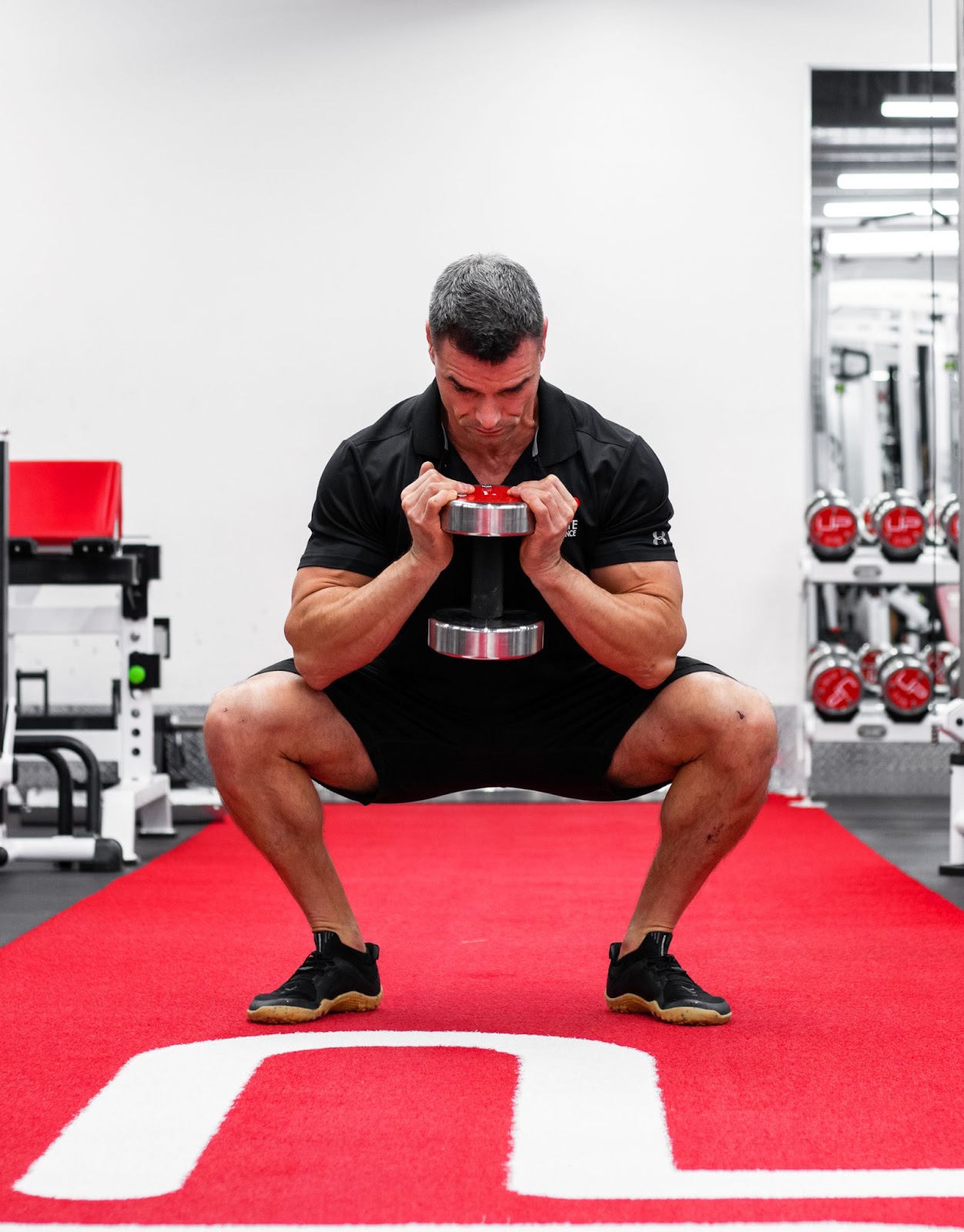
Doing 40 weighted goblet squats every day, for six months, is a grueling task. But having stuck with the program for half a year, I can confidently say that it's worth it if you want to get stronger.
I took on this challenge because I wanted my strength workouts to be more efficient, using my whole body instead of targeting specific areas. I turned to some of my favorite online trainers, and colleagues, who gave me the lowdown on what I should be doing to get the most out of my gym sessions.
Their advice was to focus on compound exercises, which recruit a broad range of muscles across the body. Enter the humble goblet squat, which fires up your quads (front thigh muscles), glutes (butt muscles) and core (your mid-body area). Here's how I fared during the six months.
The process and my results
I progressed through weights fairly quickly. I started out with a light 8kg (17.6lb) kettlebell, but after a month I switched this out for a 10kg (22lb) option. After a couple more months, when I felt that I'd perfected my form and was ready for a challenge, I took on a 16kg (35lb) weight.
I have to admit, when I first tried the higher weight I really struggled. I could feel the burn in my core when I was down at the bottom of the squat and by the end of my first set of 20 reps, I was shaking. The delayed-onset muscles soreness (DOMS) I felt in my butt, legs and lower belly was no joke, but I was still at it again the next day—two sets of 20 squats, sweat dripping down my face.
Despite how challenging it felt to start with, the goblet squats got easier—much easier—very quickly. I started seeing more definition in my quads and obliques and I could feel that my glutes had grown stronger.
For fear of hitting a plateau, I started throwing in variations on a basic goblet squat, carrying out these exercises between my sets. The first variation was a goblet squat-press, which I did at 10kg (22lb) with two sets of 20 reps again. This involved bring the kettlebell up and over your head after the squat and I found that it strengthened my shoulders and arms.
Start your week with achievable workout ideas, health tips and wellbeing advice in your inbox.
Encouraged by my results, I then started adding in a deep sumo squat to give my inner thighs a workout, too.
How to do goblet squats

To make sure I maintained proper form, I spoke to Jodie McKnight, a personal trainer at F45 Mill Hill, and got her to take me through how to do a goblet squat. Here's her advice:
Start with your feet just wider than hip width apart, holding a kettlebell or dumbbell underneath your chin. Keep your elbows tucked in and your back and core engaged.
Next, bend your knees and sink your hips down towards the ground, bringing your thighs parallel to the floor. Keep your chest high, feel the weight of the move through your heels and make sure your knees are tracking over your toes. Return to standing by driving through your heels and ensure to squeeze your glutes at the top.
How to do goblet squat press

On top of my goblet squats, I also asked McKnight to explain how to do the press variation:
Start in the same starting position as before, holding on to the handle of the kettlebell, as shown in the image above. Squat down to the floor, then drive through the heels to standing. In one fluid movement, bring the kettlebell up and overhead while squeezing through the shoulders.
Make sure to keep the core engaged and don’t arch your back as you stand up. Return kettlebell to your chest at a slow tempo, and repeat
How to do sumo goblet squats

McKnight also offered some advice on how to do sumo goblet squats:
This uses exactly the same mechanics as a goblet squat, but you will have your feet wider apart and your toes pointing outward. Be careful that your knees remain tracking over your toes in this one, if in doubt take it at a slow speed on the way down.

Jodie McKnight is a personal trainer at F45 Mill Hill, she runs circuit and interval training classes as well as offering general personal training and fitness classes.
What are the benefits of a goblet squat vs a regular squat?
Why did I choose the goblet squat over a regular barbell or back squat? The decision was made for me by my weak little wrists.
As Eddie Baruta, the global head of gym floor execution at Ultimate Performance, says, “Performing a front squat with a barbell is a more difficult, challenging move to perfect and do right, and would be a significant progression from a goblet squat. This is because it requires the lifter to maintain a brace while elevating the shoulder girdle and elbows and bring back the hands to support the bar under the tips of the fingers. This requires significant amounts of motor control, skill and strength, meaning that it is only appropriate for either intermediate or advanced gym-goers who also have the shoulder and wrist mobility to perform the exercise safely.
“While a goblet squat is still front-loaded, it requires holding the load with both hands at the chest. This gives the lifter more control and stability when performing the movement. All forms of squat require good motor control, but the goblet squat is particularly suitable for most beginners, providing that the load and range of motion are appropriate—for example, maximizing the range of motion at the ankle, knee and hip, without lifting the heels or allowing the lower back to tuck under or flex.”

Eddie Baruta is the global head of personal training at Ultimate Performance, based in Los Angeles. Ultimate Performance gyms have trained tens of thousands of clients globally with proven methods.

Lou Mudge is a Health Writer at Future Plc, working across Fit&Well and Coach. She previously worked for Live Science, and regularly writes for Space.com and Pet's Radar. Based in Bath, UK, she has a passion for food, nutrition and health and is eager to demystify diet culture in order to make health and fitness accessible to everybody.
Multiple diagnoses in her early twenties sparked an interest in the gut-brain axis and the impact that diet and exercise can have on both physical and mental health. She was put on the FODMAP elimination diet during this time and learned to adapt recipes to fit these parameters, while retaining core flavors and textures, and now enjoys cooking for gut health.
